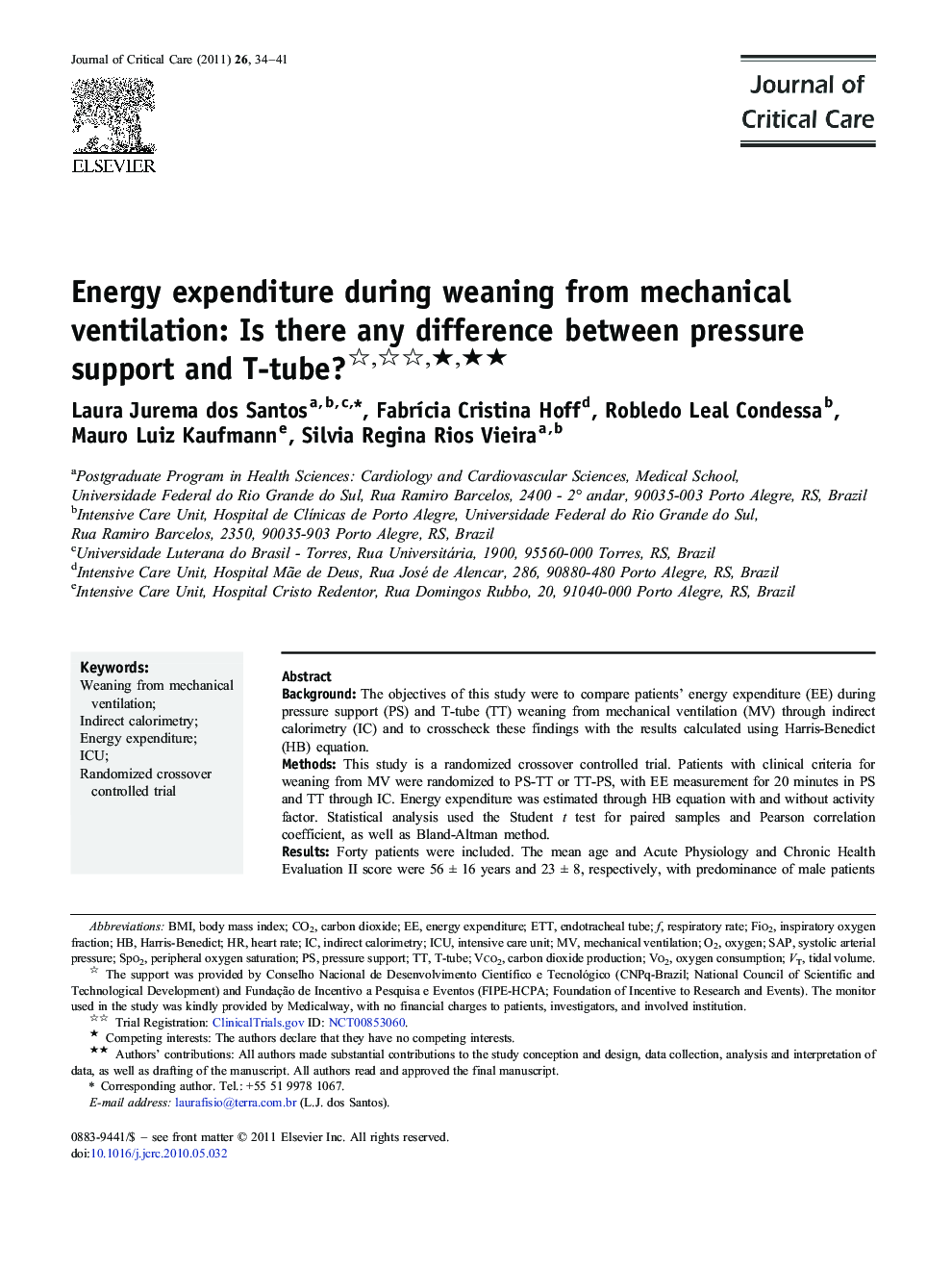| Article ID | Journal | Published Year | Pages | File Type |
|---|---|---|---|---|
| 2765395 | Journal of Critical Care | 2011 | 8 Pages |
BackgroundThe objectives of this study were to compare patients' energy expenditure (EE) during pressure support (PS) and T-tube (TT) weaning from mechanical ventilation (MV) through indirect calorimetry (IC) and to crosscheck these findings with the results calculated using Harris-Benedict (HB) equation.MethodsThis study is a randomized crossover controlled trial. Patients with clinical criteria for weaning from MV were randomized to PS-TT or TT-PS, with EE measurement for 20 minutes in PS and TT through IC. Energy expenditure was estimated through HB equation with and without activity factor. Statistical analysis used the Student t test for paired samples and Pearson correlation coefficient, as well as Bland-Altman method.ResultsForty patients were included. The mean age and Acute Physiology and Chronic Health Evaluation II score were 56 ± 16 years and 23 ± 8, respectively, with predominance of male patients (70%). Mean EE of patients in TT (1782 ± 375 kcal/d) was 14.4% higher than in PS (1558 ± 304 kcal/d; P < .001). In relation to the EE obtained with the HB equation, the mean (SD) value calculated was 1455 (210) kcal/d, and when considering the activity factor, it was 1609 (236) kcal/d, all of them presenting correlation with the values from IC in PS (r = 0.647) and TT (r = 0.539). However, the limits of agreement between the measured EE and the estimated EE suggest that the HB equation tends to underestimate the EE.ConclusionComparison of EE in PS and in TT through IC demonstrated that there is increased EE in the TT mode. The results suggest that the HB equation underestimates the EE of patients in weaning from MV.
